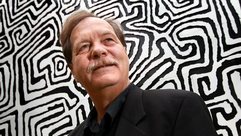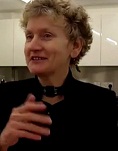
In response to my post on Ten Ways the conventional Hollywood three-act one-hero chronological structure will let you down someone in a discussion group responded by suggesting that I’d said the concepts of The Hero’s Journey (famously explained in Christopher Vogler’s wonderful book The Writers’ Journey by means of a circle diagram) were invalid. The person then cited attempts that have been made to explain nonlinear and multiple protagonist films by fitting them into one (and one only) of the hero’s journey circles.
Since I’m a huge fan of Mr Vogler’s material and have built on it extensively in my work on parallel narrative, particularly complex flashback, I thought I’d clarify my position, since there were obviously crossed wires. You might be interested since writing it made me consider the hero's journey model all over again.
My reply
Oh dear, crossed wires! I never suggested that Mr Vogler’s Hero’s Journey concepts are invalid. To the contrary, I am a great admirer of his model for use in single hero linear films and storylines and I am greatly indebted to him.
His model is a brilliant guide to creating a great film by giving you a step by step guide to what one hero has to do and feel and think during the action. It’s a route map for one-hero films. However, brilliant as it is, by definition, it’s not designed to cope with multiple protagonists or the very difficult consequences for writers that they cause, namely how you interweave multiple storylines coherently and without losing pace or having them turn into a disconnected set of character vignettes.
You can use the hero’s journey model very profitably indeed in creating multiple forms, but it is by duplicating the circles (one for each protagonist) and interweaving them in specific ways - a very different writing task from writing a one-hero story. I explain how to use the hero’s journey in both conventional narrative and nonlinear and ensemble films in great detail in my books The 21st Century Screenplay and Screenwriting Updated. The circle model is of particular use in flashbacks.*
The idea behind the model is that it tracks, step by step, one hero’s journey into hell and back (one hero only), with the hero acquiring greater self knowledge and moral improvement through specific encounters with specific archetypal characters. The emotional and physical journey is depicted diagrammatically as a circle. The order of the stages is essential to the model, and the journey happens to one individual alone. Its point to provide a step by step guide for writers to produce a linear film, and the completed circle has to read like a point by point depiction of the onscreen action. It is a causal continuum.
Thus, while I have seen examples of attempts to make multiple storyline/nonlinear films fit into one of Mr Vogler’s circle, I don’t think that works. By definition, the model is designed for one hero alone. You can’t, as I’ve seen attempted, explain a multiple protagonist and/or nonlinear film by lifting bits of behavior that match the stages of the circle from a number of different characters (sometimes without regard to where these behaviors appear in the film) and inserting them into the place in the circle diagram where the model demands they should be happening to one hero alone. That gives you nobody’s journey because no one character has completed the full circle, which is the whole point. Quite literally the hero’s journey – step by step movement of one hero, the causal continuum - has been lost. What you’ve got is a list of character behaviours that occur somewhere in a film - arranged in a circle. If you were to shoot the events as they appear in the circle the film would be barely recognizable.
Thus I’m afraid the material you cite doesn’t answer the problem for me. Great that they do for you, though!
* Mr Vogler himself has very kindly and generously endorsed my work on parallel narrative, including, actually my explanation of how to handle multiple protagonists http://www.lindaaronson.com/screenwriting-updated.html.
 RSS Feed
RSS Feed


